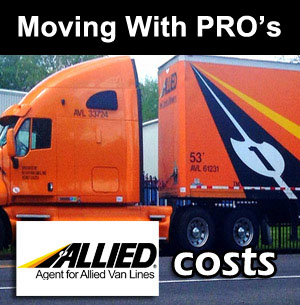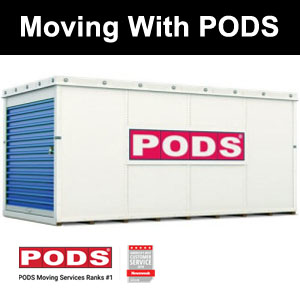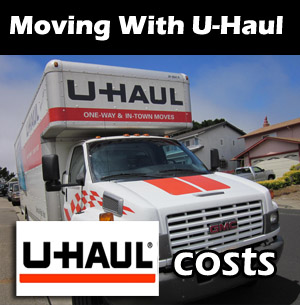
The average cost of moving across country is $3,100, with average prices for a cross country move ranging from $1,960 to $8,000 for the US in 2025 according to project costs reported by 789 members on HomeAdvisor.
Moving.com suggests nearly the same cost at $4,890 for a cross country move of $1,000 miles, with cost estimates based on moving a 2-3 bedroom house with 7,500 pounds worth of household items.
Moving Cross Country: What You Need to Know About Costs, Choices, and Services
When planning a cross-country move in the U.S., understanding the ins and outs of costs, options, and services can be a lifesaver. With so many moving services available, each offering different ways to handle the heavy lifting, knowing what to expect can make the entire process much less overwhelming. Below, we dive deep into everything you’ll need to consider, from moving estimates and options to planning tips and frequently asked questions.
1. How Much Does Moving Cross Country Cost?
Moving across the country isn’t cheap, but knowing what affects the cost can help you budget accurately. On average, moving costs range from $2,000 to $8,000, depending on various factors.
Key Factors Impacting Cross Country Moving Costs
- Distance: Naturally, the further you’re moving, the higher the price.
- Weight and Volume: Heavier and bulkier items require more resources to transport.
- Time of Year: Peak moving times, like summer, can raise prices due to high demand.
- Service Level: Full-service movers will cost more than DIY options like rental trucks or moving containers (Pods).
Average Costs for Common Moving Services
- Full-Service Movers: $4,000 – $8,000 for a three-bedroom home.
- Moving Pods (e.g., PODS, Busfreighter): $2,000 – $5,000, depending on the container size and distance.
- Rental Trucks (e.g., U-Haul, Penske): $1,500 – $3,000 plus fuel costs.
2. Types of Moving Services Available
When it comes to moving cross country, you can choose from several service levels based on your budget, timeline, and comfort level with handling logistics.
A. Full-Service Movers
Full-service movers handle everything from packing and loading to driving and unloading, making them the most hands-off and convenient option. They’re perfect for those who want a smoother experience, especially for long distances.
- Pros: Less physical work, reduced stress, efficient for large homes.
- Cons: The most expensive option, limited flexibility with scheduling.
B. Moving Containers (Pods)
Pods and similar services like Busfreighter offer a flexible option for moving. You load the container at your pace, and the company transports it cross country.
- Pros: More affordable than full-service movers, flexibility with loading/unloading times.
- Cons: You’re responsible for packing, loading, and unloading, which requires some heavy lifting.
C. Rental Trucks
For the truly DIY-inclined, renting a moving truck offers the lowest-cost option, though it also requires the most work.
- Pros: The least expensive option, full control over packing and transport.
- Cons: You’re responsible for driving, fuel costs, and all the labor.
D. Freight Trailers
Using a freight trailer, such as those offered by moving companies like U-Pack, can be a middle-ground option. The company drops off a trailer, you load it, and then they transport it.
- Pros: More affordable than full-service moving, flexible timing.
- Cons: Pricing depends on the trailer size, so unexpected costs can occur if you need more space.
3. Estimating Costs: How to Get a Reliable Moving Quote
Getting a precise moving estimate can save you from sticker shock on moving day. Here’s what you need to consider:
A. Request Multiple Quotes
Getting at least three estimates from various companies allows you to compare rates and services. Make sure each quote includes all potential charges (e.g., fuel, insurance, tolls).
B. Types of Moving Estimates
- Binding Estimate: A fixed cost based on an in-home or virtual survey of your belongings.
- Non-Binding Estimate: An approximate quote that can vary based on the final weight or volume.
- Binding Not-To-Exceed Estimate: The most favorable, as it caps costs even if the weight exceeds the estimate.
C. Questions to Ask Moving Companies
- Are there extra fees for stairs or tight spaces?
- What is your cancellation policy?
- Do you offer insurance coverage for cross-country moves?
- Are there any peak-time or seasonal pricing surcharges?
4. Money-Saving Tips for Cross Country Moves
Moving doesn’t have to drain your bank account. Here are some ways to keep costs manageable:
A. Purge Unneeded Items
The less you move, the less it costs. Host a garage sale or donate items to cut down on both weight and volume.
B. Use Moving Containers Wisely
If you’re opting for pods or similar containers, pack them strategically. Use every inch to avoid renting an additional container, which can save you hundreds.
C. Move During Off-Peak Times
Avoid moving in summer, especially between May and September, when moving costs are highest. Fall and winter moves often come with better rates.
D. Consider Hiring Help Just for Loading/Unloading
If you rent a truck or container, you can hire labor-only movers for just the heavy lifting. This option reduces costs but saves you from the back-breaking work.
5. Preparing for a Cross Country Move: Step-by-Step Guide
Step 1: Plan Ahead
Start at least two to three months before your move date to book services, arrange for moving estimates, and create a moving checklist.
Step 2: Notify Important Parties
Change your address with the post office, notify your bank, utility companies, and any other service providers.
Step 3: Pack Efficiently
Organize items by room and clearly label boxes. This will make unpacking far easier and ensure you don’t lose track of essential items.
Step 4: Review Insurance Options
Long-distance moves come with some risks. Review your options for moving insurance, especially if you have valuable or fragile items.
Step 5: Create an Essentials Box
Pack a box with essentials you’ll need during the first few days in your new home, like toiletries, a change of clothes, snacks, and important documents.
6. Common Questions About Moving Cross Country
Q1: How much does it cost to move across the country?
The cost varies significantly but averages between $2,000 and $8,000 depending on your moving method, distance, and service level.
Q2: Is renting a moving pod cheaper than hiring movers?
Yes, using a moving pod is generally cheaper than full-service movers, although it requires more work on your end for packing and loading.
Q3: How much does it cost to rent a moving truck across country?
A rental truck typically costs between $1,500 and $3,000, plus additional costs for fuel. The price varies by truck size and rental company.
Q4: Are there any ways to reduce moving costs?
Yes, you can reduce costs by moving off-peak, purging items, and comparing quotes. Some movers also offer discounts for military or senior citizens.
Q5: What is Busfreighter, and is it a good option?
Busfreighter is a company that transports moving containers across country. It’s a budget-friendly option if you’re comfortable handling the packing and loading yourself.
7. Quick Tips for Reducing Stress on Moving Day
Moving day can be chaotic, but a few practical steps can make it smoother:
- Label Boxes Clearly: Write contents and room locations on each box.
- Have Snacks and Water on Hand: Staying hydrated and fueled is essential.
- Prepare for the Unexpected: Keep a small toolkit and extra packing tape close by.
- Secure Valuables Separately: Jewelry, passports, and financial documents should travel with you, not on the moving truck.
8. How Moving Across Country Compares to Moving Across Town
Moving across town can feel like a breeze compared to a cross-country move. Here are a few stark differences to keep in mind:
- Distance Costs: Cross-country moves include fuel surcharges, which can be a significant part of the cost.
- Time Requirements: Packing and travel time for a cross-country move can take several days, while a local move is usually done in a day.
- Logistics: Planning a cross-country move involves coordinating services, lodging, and sometimes car transportation. Local moves are typically more straightforward.
9. What to Expect After a Cross Country Move
Settling into a new location is both exciting and challenging. Here’s a glimpse into what you can expect post-move:
- Time to Settle: It may take a few weeks to feel fully at home. Unpacking and organizing can be gradual, so be patient.
- Finding Local Services: Look for new healthcare providers, grocery stores, and recreational spots.
- Exploring Your Surroundings: Moving cross country is a chance to explore a new city or region. Take some time to visit local landmarks and dive into the local culture.
Details about some cross country moving options below :
1. Cross Country Moving Companies (cost $10,000)

One of the easiest cross country moving options is to hire a professional moving company. Professional moving cross country companies like Allied, North American, Atlas, Old Dominion, and Mayflower provide full-service moving services and can take care of all the heavy lifting for you. Most cross country movers offer moving and storage services as well as packing and unpacking services. However, choosing to hire professional movers is the most expensive cross country moving option and can cost you upwards up $10,000 for a typical 3 bedroom house. But you’re going to have to pay more money for professional moving costs if you want someone else to do all of the work for you.
2. Moving Pods Aren’t The Cheapest (cost $4,500)

Moving pods are the second cheapest moving option with an average cost of about $4,500 to move a 3 bedroom home. However, Pods.com states that the average cost of a cross-country move with PODS is about $2,249 with average prices ranging from $1,499 to $2,999. They do not mention the amount of weight in that cost estimate.
3. Renting a U-Haul (cost $3,000)

Open to loading all of your stuff into a rental truck, driving it to a new location, and then unpacking everything once you get there? Well, renting a U-Haul will be the cheapest cross country moving option. If you’re willing to work, renting a U-Haul will only cost you about $3,000 and comes with insurance to cover your property. Budget Truck Rental and Penske are two other big names in the truck rental industry. Renting a U-Haul is much cheaper than hiring professional movers.
4. Throw Everything Away & Drive Your Car (cost $500)

If you are moving cross country on a budget, renting expensive rental trucks or hiring professional movers isn’t a feasible option. Take everything that can fit in your car and throw the rest away or donate it to Goodwill. Your only moving cost will include gas and anything else you purchase. Estimate at least $500 for gas, depending on how many miles per gallon your vehicle gets. MyMove.com says “you don’t have to move everything”. They say you should examine the cost of what your stuff is worth vs how much it will cost to buy new stuff. Get an estimate of how much it will cost to move your goods, and then research how much it costs to replace those items in your new city.
5. Use Busfreighter To Ship Boxes ($160)
Busfreighter will ship your boxes to your new location for as little as $1.19 per pound. According the HuffPost, Busfreighter can shop a full room worth of items from Los Angeles to New York City for about $160. However, you will have to drive your items to the drop off location or they can pick them up for an additional $45 or so.
See Also:
Best Rated Cross Country Movers




